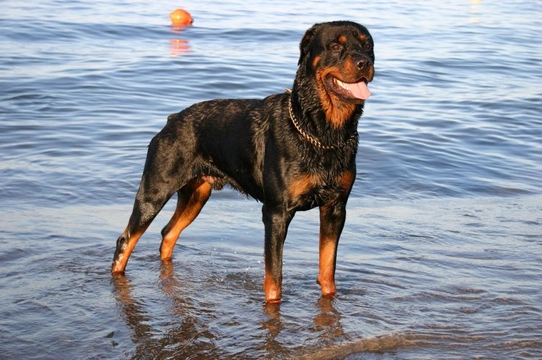
Why did many dog breeds historically have their tails docked?
Tail docking of dogs, along with other painful and unnecessary procedures like ear cropping, are illegal for cosmetic purposes in the UK. However, until the law changed to reflect this in 2006, many breeds and types of dogs had their tails docked as standard soon after birth. In fact, the sight of certain dog breeds with their long, natural tails such as the boxer and rottweiler still seems a little unusual to people who grew up with such breeds when docking was the norm, even though the vast majority of dog lovers approve of the ban on docking.
There is a lot of press and publicity afforded to the ban on tail docking and the negative impact that docking can have on dogs – but something that not all dog owners know is why tail docking was originally performed in the first place, and what it was supposed to achieve.
Whilst it is true that in modern times before docking was banned, docking was performed as a cosmetic procedure to conform to the accepted norms with the sole intention of changing the appearance of dogs from breeds that were commonly docked, this is not how tail docking started.
In this article, we will look at the original, historical reasons behind why dogs were docked, and how this procedure became so common and widespread across many dog breeds at its peak. We’ll also look at the very few exceptions to the tail docking law that can be found in the UK today too. Read on to learn more.
Historical reasons for tail docking
Over the long history of dog tail docking in the UK, a wide range of reasons and justifications for the procedure have been put forwards. Many of these reflect the nature of the times in which they arose, and as our understanding of dogs and science have increased over time, these reasons soon became moot.
Others are more plausible, although they still tend to raise eyebrows in modern times.
First of all, tail docking during its earlier origins was purported to bring about a number of health benefits to dogs, none of which are scientifically viable. Docking was supposed to achieve a whole manner of things including making dogs run faster, strengthening their spines, and even helping to ward off rabies!
Additionally, during the Georgian era, taxes were levied against working dogs with long tails, which meant that the tax could be circumvented by docking puppies. Even after this specific tax levy was withdrawn in the late 18th century, docking had become standard procedure and remained normal practice for most dog owners.
Dogs that were commonly used for fighting, baiting and other so-called sports that have also since become illegal also used to be docked as standard, to negate the risk of the dog’s tail being bitten or injured by an opponent.
More modern reasons for tail docking
For working dogs and certain specific dog breeds in the first half of the 20th century, tail docking remained accepted practice, and dogs of breeds that retained long tails when their counterparts were docked tended to draw attention. The loose reasoning behind this was mainly force of habit and the norms of the time, but it was also considered to make it easier to keep a working dog’s coat in good condition as a tail that is absent won’t pick up thistles and burrs.
Docked tails were so common up until the late 20th century that it was virtually impossible to buy a puppy from certain breeds that hadn’t already been docked, and it was also quite anomalous to see adult dogs of certain breeds with tails.
Why is tail docking bad?
When tail docking was common, this would usually be performed on very young puppies and only rarely with the involvement of a vet. Often, an elastic band or tight string would be tied around the tail at the point of docking to cut off the circulation, and left in place for several days until the longer part of the tail died and fell off.
Not only did this cause unnecessary pain and suffering to pups, but also brought with it the risk of infection. However, tail docking has a lifelong impact on dogs, because dogs communicate with their tails and a dog without a tail is one that cannot be “read” so effectively by others, which can lead to problems.
Dogs also use their tails for balance in some cases too, and an abnormally shortened tail doesn’t help with this.
Working dogs and tail docking exceptions
There are still a few limited exceptions to the ban on tail docking in the UK, which is something that not everyone is aware of.
Tails can of course be amputated by a vet if they are injured, damaged or diseased, and this is perfectly legal as it is a necessary procedure performed in the best interests of the dog and not merely for cosmetic purposes.
Additionally, dogs used by the police, military, rescue services or legal shooting parties are also permitted to have their tails docked if this can be shown to be necessary for the dog’s working roles, although this exception is rarely used in practice.



